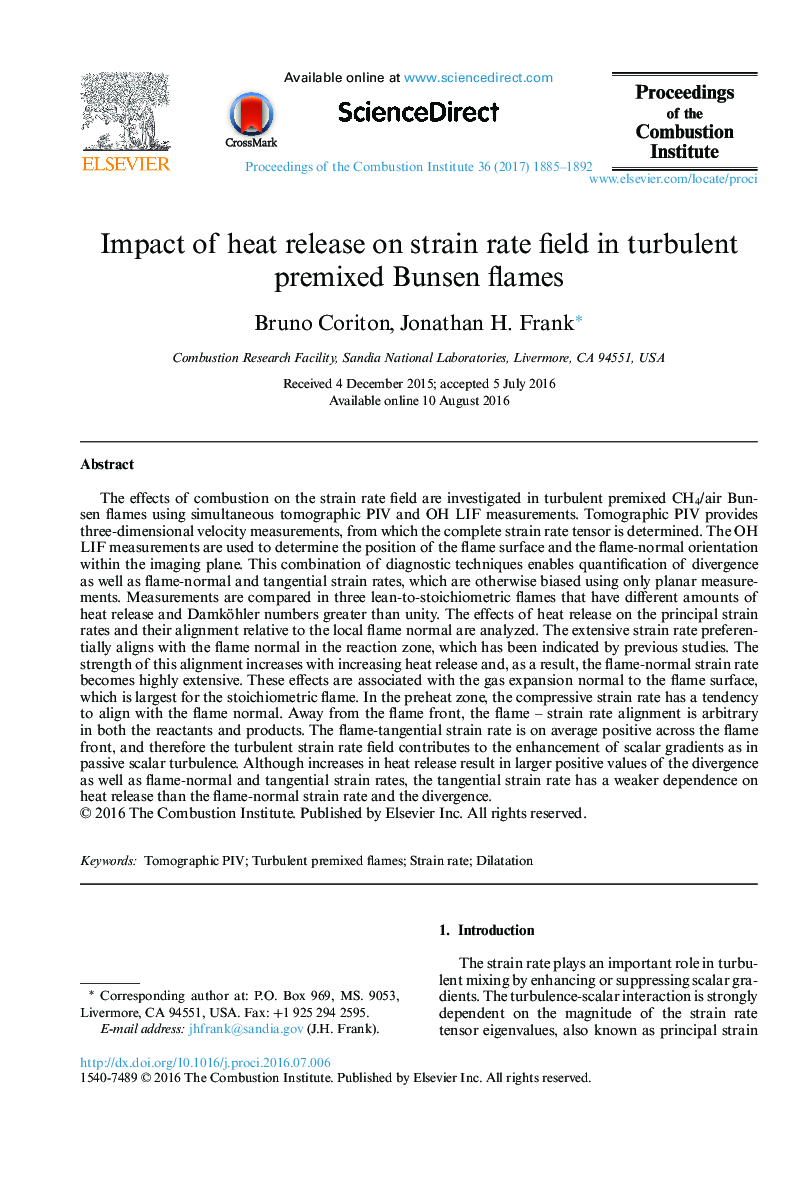| کد مقاله | کد نشریه | سال انتشار | مقاله انگلیسی | نسخه تمام متن |
|---|---|---|---|---|
| 6478124 | 1427916 | 2017 | 8 صفحه PDF | دانلود رایگان |
The effects of combustion on the strain rate field are investigated in turbulent premixed CH4/air Bunsen flames using simultaneous tomographic PIV and OH LIF measurements. Tomographic PIV provides three-dimensional velocity measurements, from which the complete strain rate tensor is determined. The OH LIF measurements are used to determine the position of the flame surface and the flame-normal orientation within the imaging plane. This combination of diagnostic techniques enables quantification of divergence as well as flame-normal and tangential strain rates, which are otherwise biased using only planar measurements. Measurements are compared in three lean-to-stoichiometric flames that have different amounts of heat release and Damköhler numbers greater than unity. The effects of heat release on the principal strain rates and their alignment relative to the local flame normal are analyzed. The extensive strain rate preferentially aligns with the flame normal in the reaction zone, which has been indicated by previous studies. The strength of this alignment increases with increasing heat release and, as a result, the flame-normal strain rate becomes highly extensive. These effects are associated with the gas expansion normal to the flame surface, which is largest for the stoichiometric flame. In the preheat zone, the compressive strain rate has a tendency to align with the flame normal. Away from the flame front, the flame – strain rate alignment is arbitrary in both the reactants and products. The flame-tangential strain rate is on average positive across the flame front, and therefore the turbulent strain rate field contributes to the enhancement of scalar gradients as in passive scalar turbulence. Although increases in heat release result in larger positive values of the divergence as well as flame-normal and tangential strain rates, the tangential strain rate has a weaker dependence on heat release than the flame-normal strain rate and the divergence.
Journal: Proceedings of the Combustion Institute - Volume 36, Issue 2, 2017, Pages 1885–1892
